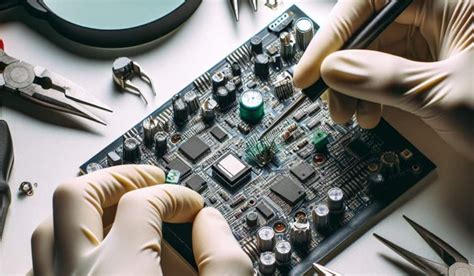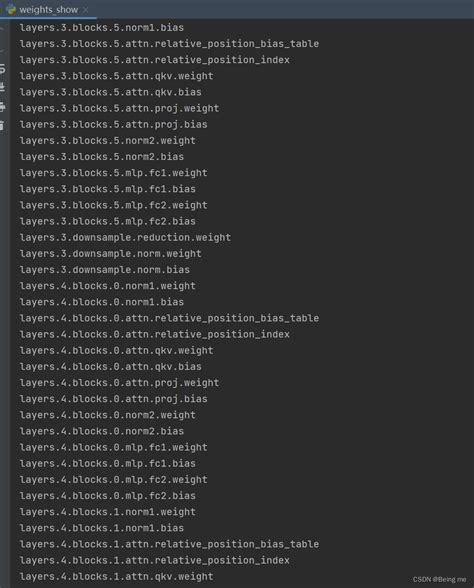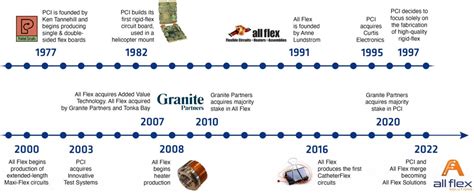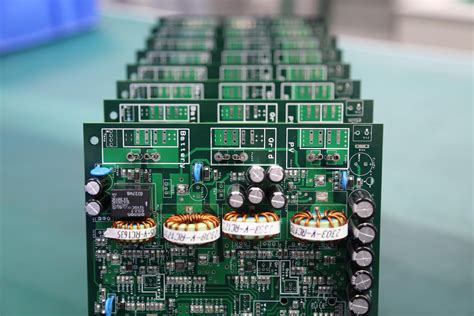Mastering Control Board Assembly: A Comprehensive Guide
Key Takeaways
Mastering pcb assembly is crucial for engineers and hobbyists alike, as it lays the foundation for creating reliable electronic devices. To effectively navigate the complexities of pcba, one must first grasp the basic principles. Understanding how various components fit together on a circuit board allows for better planning and execution of projects. Paying attention to essential techniques is equally important; for instance, using precision tools when placing components can significantly enhance the quality of the final output. Moreover, being aware of common challenges—such as misalignment or improper soldering—enables you to proactively find solutions and reduce errors during the assembly process. Implementing best practices in quality control not only boosts efficiency but also ensures that each project meets industry standards. As you delve deeper into control board assembly, exploring advanced techniques can provide insights into handling complex designs and layouts with confidence. Ultimately, mastering these elements will provide a robust foundation in pcb assembly that paves the way for future innovations in control board technology.
Understanding the Basics of Control Board Assembly
Control board assembly, commonly referred to as pcb assembly or pcba, is a critical aspect of electronics manufacturing that involves the construction and integration of various elements on a printed circuit board (PCB). To effectively grasp the intricacies of this process, one must first comprehend the foundational components that constitute pcb assembly. Key elements include the design blueprint, which guides the layout and placement of electronic components, as well as the soldering method employed.
Soldering can be categorized primarily into surface mount technology (SMT) and through-hole mounting. Each method has its own advantages and is chosen based on factors such as component size and assembly complexity. Understanding these differences is crucial for ensuring efficiency and precision during assembly.
Moreover, familiarity with industry-standard practices is essential for mastering control board assembly. The use of specialized tools, such as soldering irons, pick-and-place machines, and inspection systems, can significantly enhance accuracy in project outcomes. For those embarking on this journey in pcba, it might be helpful to keep in mind some key advice:
“Investing in quality tools not only improves results but also enhances your overall experience during assembly.”
By focusing on these foundational principles and employing the right tools, individuals can develop a strong proficiency in control board assembly, setting a robust groundwork for advanced techniques and more complex designs later on. Understanding these basics positions aspiring engineers to navigate challenges with greater ease and confidence, ultimately leading to superior results in their electronic projects.
Essential Tools and Equipment for Effective Assembly
When embarking on pcb assembly, having the right tools and equipment is crucial for ensuring precision and efficiency. The assembly process requires meticulous attention to detail, facilitated by a range of specialized tools. At the core of any effective pcba operation are soldering irons and stations, which allow for secure connections between components on the circuit board. A good soldering iron should offer adjustable temperature settings to accommodate different materials, preserving the integrity of sensitive components.
Another essential tool is the multimeter, which is indispensable for testing electrical connections and ensuring that voltage levels are within acceptable ranges before finalizing an assembly. Additionally, precision tweezers can help in handling tiny components with care, while a magnifying glass or microscope can enhance visibility of intricate details during the assembly process.
For organizing components, component trays or ESD safe bins are vital. They not only keep your workspace tidy but also protect delicate parts from electrostatic discharge. Finally, having a designated workspace equipped with proper lighting contributes to minimizing errors during assembly.
Here’s a brief overview of essential tools for effective pcb assembly:
| Tool/Equipment | Purpose |
|---|---|
| Soldering Iron | Creating connections between components |
| Multimeter | Testing voltage and continuity |
| Precision Tweezers | Handling small components |
| Magnifying Glass | Enhancing visibility of small details |
| Component Trays | Organizing parts efficiently |
By utilizing this selection of tools strategically, you can significantly enhance your skill in pcba, paving the way for successful assembly outcomes in every project you undertake.
Step-by-Step Techniques for Precision Assembly
To achieve precision in pcb assembly, it is essential to follow a systematic approach that encompasses several key steps. First, begin with meticulous preparation of the pcba components and tools. Ensuring that all components are organized and free of defects is crucial for minimizing errors during assembly. Next, it’s important to map out the layout of the circuit board accurately. This involves familiarizing oneself with the schematics and ensuring that every component is placed correctly according to the design specifications.
Once the layout is established, employ precision soldering techniques, which are fundamental in achieving a robust connection between components. Using appropriate soldering tools and maintaining a steady hand will enhance the quality of solder joints significantly. While soldering, ensure the utilization of ample flux to facilitate better adhesion and conductivity.
In addition, integrating automated processes can elevate assembly precision further while maintaining efficiency. Automated Pick-and-Place machines can significantly reduce human error by accurately positioning components on the board. However, validate each phase of assembly through thorough inspection and testing methods post-assembly to detect any possible issues early on.
Throughout these processes, always adhere to relevant safety protocols to protect both yourself and your work environment. By applying these step-by-step techniques, one can master control board assembly, ensuring that projects are completed with both efficiency and precision.
Common Challenges in Control Board Assembly and Their Solutions
When engaging in pcb assembly, various challenges can arise that may hinder the efficiency and quality of the pcba process. One prevalent issue is the misalignment of components during the soldering phase, which can lead to circuit malfunctions. To address this, it is crucial to utilize precise alignment tools, such as optical inspection systems, which help ensure that every component is placed accurately on the board. Moreover, soldering defects can occur, particularly with complex components that have multiple leads. Implementing automated soldering techniques, such as selective soldering or using wave soldering systems, can significantly improve consistency and reduce human error.
Another common problem involves thermal management; overheating during assembly can damage sensitive components. Mitigating this risk involves careful planning of the assembly environment and incorporating active cooling solutions, like heat sinks or fans, into the design process. Additionally, ensuring proper ventilation during pcb assembly is fundamental to maintaining optimal temperatures.
Lastly, securing a reliable supply chain for quality materials is paramount. Delays or procurement of inferior parts can lead to extended project timelines and compromised performance in pcba assemblies. Establishing strong relationships with trusted suppliers and conducting thorough quality checks can help address these sourcing challenges effectively. By understanding these common pitfalls in control board assembly and implementing strategic solutions, practitioners can enhance overall productivity and ensure successful project outcomes.
Best Practices for Quality Control in Assembly Projects
Ensuring quality in pcb assembly is crucial for the longevity and reliability of the final product. Implementing effective quality control measures helps to identify defects early in the pcba process and minimizes rework costs. One of the foremost practices is to establish a standardized checklist that encompasses critical points of inspection, such as component placement, solder joint integrity, and overall board appearance. Utilizing both visual inspections and automated optical inspection (AOI) systems can significantly enhance precision, as these technologies are adept at detecting inconsistencies or flaws that may be missed by the naked eye.
In addition to inspections, compiling and analyzing data from previous projects can provide valuable insights into recurring issues and areas for improvement. Creating a culture of continuous improvement encourages team members to report problems promptly, facilitating quicker resolutions. It’s also beneficial to conduct regular training sessions for assembly staff to familiarize them with new tools and techniques, ensuring that everyone is aligned with the best practices in pcb assembly. By fostering a proactive approach towards quality control, teams can deliver higher-quality pcba results, ultimately enhancing customer satisfaction and reducing time-to-market.
Advanced Techniques for Complex Control Board Design
In the realm of pcb assembly and complex control board design, it is crucial to adopt advanced techniques that enhance precision and performance. One such technique involves the use of multilayer boards, which allow for more intricate circuitry and functionalities while minimizing space. The intricacies of pcba layouts necessitate advanced routing algorithms to ensure that signal integrity is maintained across densely packed components. Additionally, employing via-in-pad designs can reduce electromagnetic interference and improve thermal management, enhancing the overall performance of the circuit.
Another vital approach is the integration of automated assembly processes that assist in achieving higher consistency and accuracy in soldering components. Utilizing advanced soldering methods like selective soldering can significantly improve the quality of connections in complicated areas where traditional methods may falter. It is also essential to implement comprehensive testing strategies such as boundary scan tests or automated optical inspections during and after the assembly process to identify defects early.
Understanding the thermal characteristics and ensuring proper heat dissipation in complex designs further emphasizes the need for advanced methodologies. This involves selecting appropriate heat sinks and thermal pads, as well as optimizing component placement for effective airflow. By embracing these advanced techniques, professionals can ensure their pcb assembly projects achieve both high functionality and reliability, paving the way for cutting-edge electronic applications.
Safety Considerations in Control Board Assembly
When engaging in pcb assembly, safety should always be a primary concern. The assembly process often involves working with small components, soldering tools, and sometimes even high voltage systems. Therefore, ensuring a safe working environment is critical to preventing accidents and ensuring the health of the technician. Proper use of personal protective equipment (PPE), such as safety glasses and anti-static wrist straps, is essential to protect against flying solder or static discharge that can damage sensitive components during pcba. Additionally, a well-organized workspace can significantly reduce hazards; keeping tools and materials neatly arranged minimizes the risk of accidents.
It’s also vital to follow manufacturer guidelines regarding the operation of machinery used in control board assembly. Improper handling of equipment can lead to injuries or damage to the pcb itself. Furthermore, technicians should be trained in emergency response procedures in case of unexpected incidents, such as electrical shocks or fire hazards. By prioritizing these safety considerations, practitioners not only enhance their own well-being but also improve the overall quality and reliability of the assembly projects they undertake. Proper safety measures form a foundation for mastering the intricate art of assembly while promoting a culture of responsibility within teams engaged in pcba tasks.
Future Trends in Control Board Technology and Assembly
As the field of pcb assembly continues to evolve, several emerging trends are shaping the future of control board technology and assembly processes. One significant trend is the increasing integration of automation and robotics into pcba workflows. Automated systems not only enhance precision but also significantly reduce assembly time, leading to improved efficiency. Additionally, the rise of smart manufacturing techniques, driven by the Internet of Things (IoT) and Industry 4.0 principles, is allowing for real-time monitoring and data analysis during control board assembly, optimizing performance and minimizing errors.
Another noteworthy development is the focus on miniaturization. As electronic products become more compact, there is a greater demand for smaller and more intricate pcba designs. This trend necessitates advanced techniques in assembly to ensure that functionality is not compromised while maintaining high standards of quality.
Moreover, sustainability in manufacturing processes has become a priority. Companies are increasingly adopting environmentally friendly materials for their pcb assembly, aiming to reduce waste and enhance recyclability. This shift not only meets regulatory requirements but also caters to consumer demand for greener electronics.
Lastly, advancements in materials science are leading to innovative substrates that enhance the thermal performance and durability of control boards. These materials support the growing complexity in electronic designs while ensuring reliability over time.
In conclusion, staying ahead of these trends will be crucial for professionals involved in pcb assembly, as they navigate a rapidly changing landscape characterized by technological advancements and evolving industry standards.
Conclusion
In mastering pcb assembly, achieving a solid understanding of the entire process is vital. This guide has equipped you with knowledge about the essentials of pcba, outlining fundamental techniques, tools, and best practices. By applying these insights, you can ensure precision and efficiency in every assembly project. As you refine your skills, keep in mind that each project may present unique challenges and opportunities for growth. Prioritizing quality control will not only enhance your output but also build your reputation as a reliable assembler in the industry. Remember to stay informed about emerging trends in control board technology to continuously evolve your techniques and methodologies. By embracing a commitment to excellence and innovation in control board assembly, you set the stage for successful future projects while contributing to advancements within the field.
FAQs
What is PCB assembly?
PCB assembly, often referred to as PCBA, is the process of connecting electronic components to a printed circuit board (PCB) to create a functional electronic assembly.
What tools are essential for effective PCB assembly?
Essential tools for PCBA include soldering irons, precision tweezers, multimeters, and various hand tools that ensure accurate placement and secure connections.
How do I ensure precision in PCB assembly?
To ensure precision in PCB assembly, it is vital to follow step-by-step techniques meticulously, utilize the right tools, and maintain a clean workspace.
What common challenges might I face during PCB assembly?
Common challenges in PCB assembly include misalignment of components, soldering defects, and difficulties in managing small parts. Recognizing these issues early can help implement appropriate solutions.
Are there best practices for quality control in PCB assembly?
Yes, implementing routine inspections throughout the PCBA process and using automated testing tools are critical best practices for maintaining quality control in your projects.
What safety considerations should I keep in mind during PCB assembly?
Important safety considerations include wearing protective gear, maintaining proper ventilation when soldering, and carefully handling tools and materials to prevent accidents.
What are some future trends in control board technology and assembly?
Future trends may include advances in automation for PCB assembly, enhancements in material technology, and a growing emphasis on eco-friendliness within the electronics manufacturing industry.







